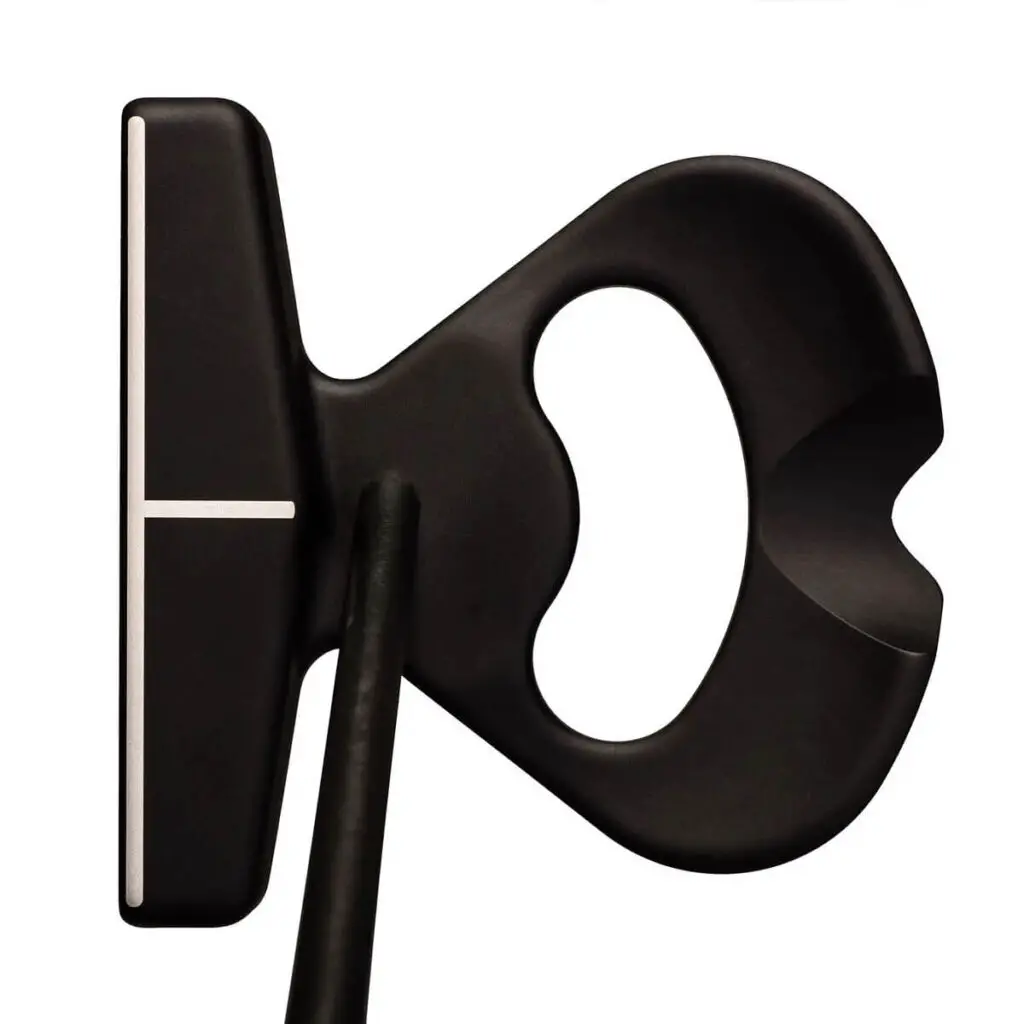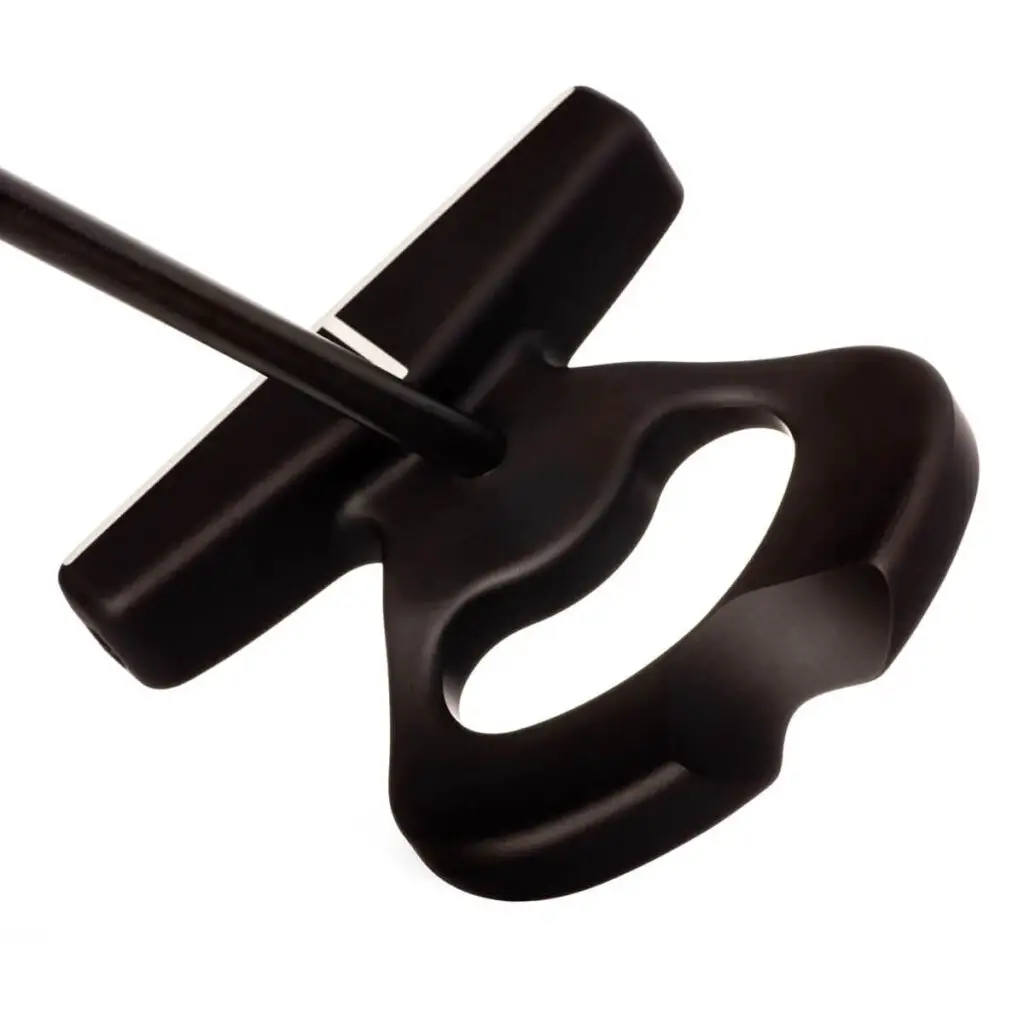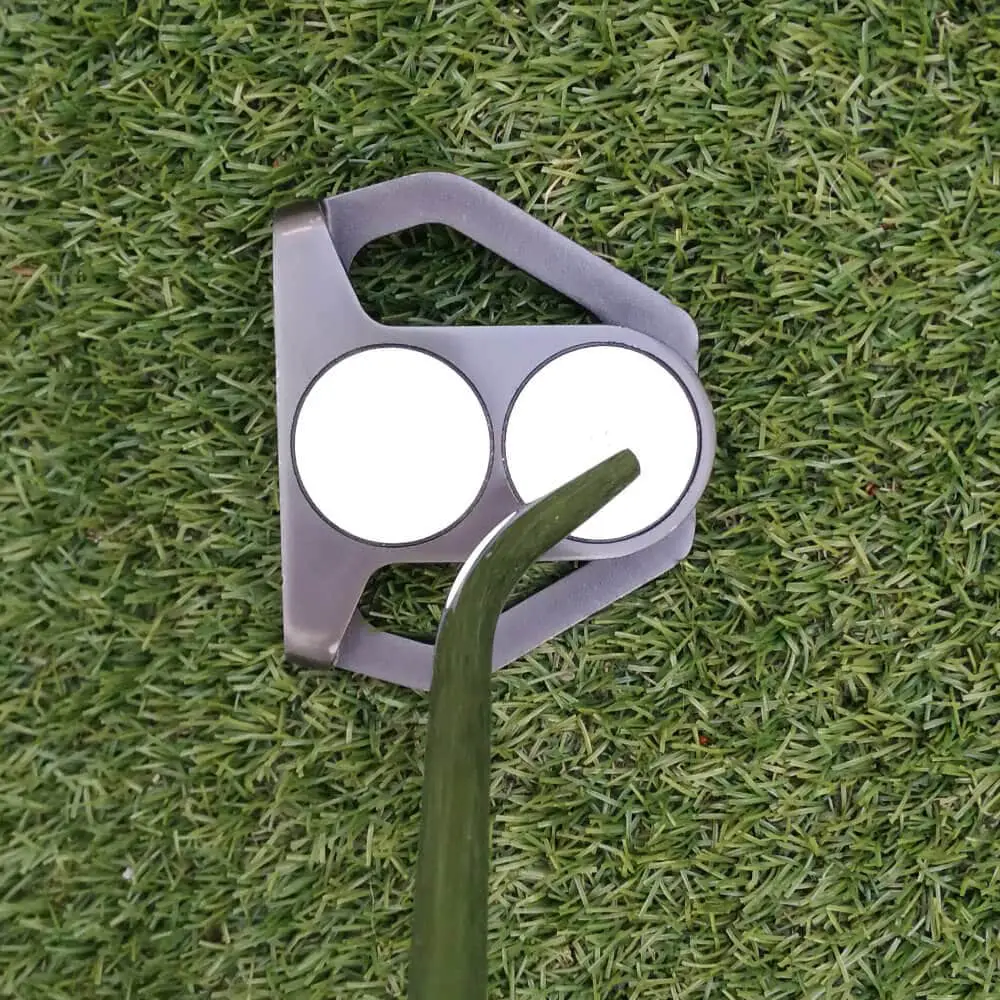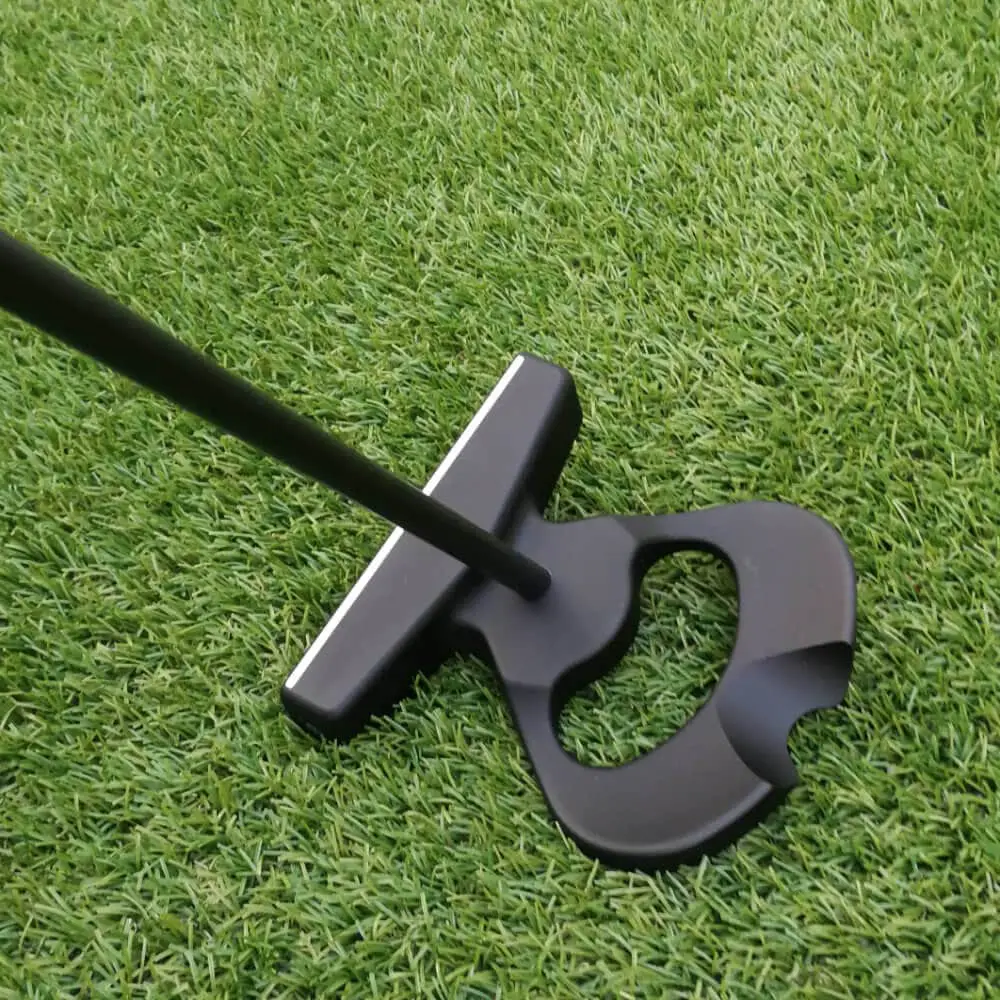I’ve been eyeing out the LAB Golf Directed Force 2.1 Putter for years. After missing a few very makeable putts in an important matchplay game, I decided that enough was enough. I let go of the notion that I am a talented putter and put up my hand for what can only be described as a game improvement putter. After selling a few second-hand clubs on Facebook Marketplace, I placed an order for the DF 2.1 Putter. Let’s just say that I’m pretty happy with my decision.
Table of Contents
My Biggest Concern Before Buying The DF 2.1
No 1 Concern: What is it like on super quick greens?
At one point, I used an Odyssey 2 Ball BackStryke putter which felt amazing outside of 5 feet but terrifying over short putts on quick greens. I had two key issues with the Odyssey Backstryke
1. The Odyssey Backstryke was super hot off the face
Even the slightest touch on a quick green would travel 3-4 feet. This meant that I had to be absolutely spot on with the line on short putts.
2. It was easy to twist the face of the Odyssey Backstryke
With the shaft positioned directly into the back of the putter head, any twist or turn to the shaft is magnified at the opposite end of the putter (where the face is).
Given that face angle is the primary determinant of whether or not a putt starts on the right line, the Oddyssey Backstryke proved to be too punitive on short putts. It was too easy to twist the face, and it was difficult to hit short putts with authority, knowing that I could leave myself with a longer putt coming back.
Nevertheless, I always loved the feel of the Odyssey Backstryke, and I’ve kept it in my house for over a decade. I’ve basically been waiting for a better version to be released, and in my opinion, LAB golf has effectively produced the putter that I’ve been waiting for. Not bad for a company started by a golf-obsessed mini tour player using garage tools and intuition.
Key Point: The DF 2.1 Performs Well On Fast Greens
Thankfully, the DF 2.1 isn’t hot off the face. When playing quick greens, you should be able to establish good distance control if you spend a bit of time on the practice green before the round. Also, because the shaft goes directly into the center of the putter head, there is only a small distance between the shaft and the putter face. This helps the DF 2.1 avoid the twisting face problem that I couldn’t shake with the Odyssey Backstryke.
In other words, the LAB Golf DF 2.1 doesn’t share the weaknesses of Odyssey’s original Backstryke putters. It is also worth noting that Oddyssey has since reduced the distance between the shaft and putter face on their latest range of Backstryke putters. However, Odyssey’s BackStryke design is still vastly inferior to the Directed Force 2.1. I say that as someone who owns both products. There is no comparison.
Does Lie Angle Balance Technology actually make a difference?
When you watch the videos of Bill Presse and Sam Hahn using the revealer, it’s pretty obvious that LAB golf is able to deliver on their promise of creating a torque free putter.
But how does a lie angle balance putter actually feel to use?
If I had to summarize the feeling in a three-word phrase, ‘borderline fucking magical’ would be my choice of words. I will now explain why it feels so good.
Extremely Stable
A lot of reviewers have noted that the DF 2.1 feels relatively light, despite the fact that the putter head is actually quite heavy. One of the reasons it feels light is because the putter head is so well balanced.
Personally, I find the DF 2.1 feels extremely stable at address and throughout the stroke. In addition, I find it hard to swing the Directed Force 2.1 quickly. It’s almost like the lie angle balance and the weight of the putter head dictate the pace of the stroke.
It helps establish a natural pendulum
To be a good putter, you have to create a steady and controlled pendulum motion. Most people don’t have too much difficulty with this task, but if you aren’t the best putter, you probably have some fear-induced twitchiness embedded into your stroke.
Thankfully, the DF 2.1 can help you feel the arc that the putter wants to travel on (this is based on the lie angle). The moment the putter moves out of this arc, it will feel off balance. However, if you spend time moving the putter back and through in a continous motion, you should start to feel a very stable putting pendulum.
It’s almost like the putter doesn’t want to deviate from the arc established by the lie angle. Of course, you can still mess up your stroke by introducing human error into the equation. Nevertheless, it’s pretty easy to get the DF 2.1 moving in a super steady pendulum motion. This is partially why it feels so good to use.
Most importantly, the DF 2.1 Putter feels balanced
To make this point easier to understand, you need to understand the difference between a face balanced putter, and a lie-angle balanced putter.
Face Balanced Putter
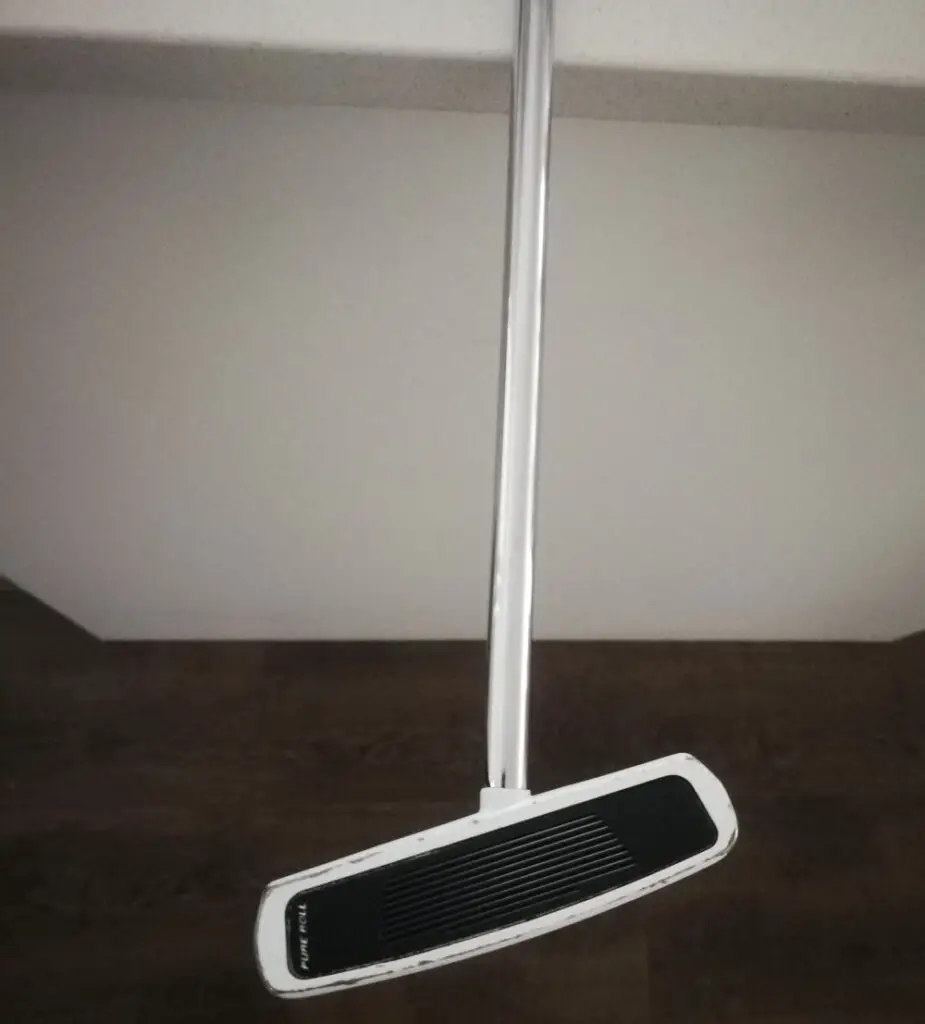
As you can see, the natural resting point of a face balanced putter is directly toward the sky. This design would only make sense if your aim is to putt directly toward the heavens (ie a 90 degree upslope).
Based on this verifiable scientific fact, it would make more sense to call face balanced putters, sky balanced putters. That is a more truthful and far less marketable description of what face balanced putters actually do.
More importantly, it’s hard to understand why so many putters are built this way. Surely balancing the face of the putter toward the target makes more sense than balancing the face of the putter toward the sky?
Lie Angle Balance Putter

There is a false truism that face balanced putters are best suited to a straight-back, straight-through stroke. The revealer demonstrates that this is simply a lie that the golf industry has been selling for decades. It’s not the first lie deeply embedded in the world of golf and it won’t be the last. However, at least this particularly lie has been exposed.
Bill Presse III is basically the Christoper Columbus of the putting industry. He has exposed the fundamental flaw in almost every putter that is currently available, that being the irrefutable tendency to fan open and closed during the stroke due to imbalanced weighing that literally produces torque (rotational force) in the putter head.
The difference with lie angle balanced putters is that the putter head remains square to the arc established by the lie angle: at address, during the backstroke, and during the follow-through.
The revealer makes this very clear to see, and a few putts with the DF 2.1 makes it very easy to feel. If you are scientifically minded, you will appreciate how simple and stable it is to swing the Directed Force putter efficiently.
What Does the Press II Grip 3º Feel Like?
It didn’t take me very long to get comfortable with the Press II Grip. I’m not the biggest fan of pencil thin grips, so the Press II grip felt good from the get-go.
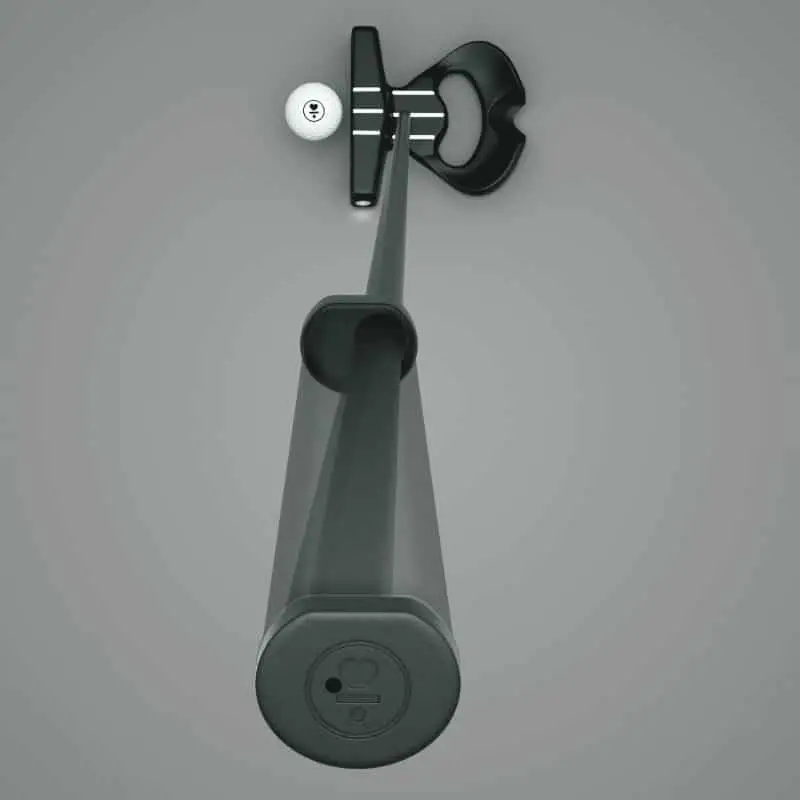
As you can see from the image above, your hands are pre-set into a 3-degree forward press which actually feels really nice.
Perhaps more importantly, the putter is designed with this forward press in mind, which most other putters aren’t.
In my experience, whenever I used a substantial forward press I run into alignment issues. More specifically, if I use a forward press with a standard mallet or a blade, I tend to open up the face slightly.
Fortunately, the pre-set forward press built into the DF 2.1 feels perfectly natural, and it doesn’t present any alignment issues whatsoever.
The only concern that I have with the Press II Grip is that I keep bouncing between the claw, and a regular grip. I feel a bit like Colin Morikawa before his British Open triumph (minus the golfing talent of course). This is not a downside, however. I’ve been too scared to use a traditional grip for years.
The DF 2.1 has introduced the possibility of going back to a traditional right-hand low grip because the forward press feels so natural and comfortable with this setup. But for now, I’m sticking to the claw, because I’m more bankable over short putts with the claw grip (at this point in time).
What I like most about the LAB Golf DF 2.1 Putter
It makes it easy to get the ball started on the right line
Getting the ball started on exactly the right line has been one of my biggest frustrations in golf. It’s like I have this permanent disconnect between where I aim and where I actually hit the ball, when I have a putter in my hands.
Thankfully, I have noticed an immediate imrovement in my ability to hit the ball where I am aiming with the DF 2.1 in my hands. If I had to guess why, this would probably be explained by the automatic forward press, and the elimination of torque from the putter face. To me, this seems to be a pretty good combination for getting the ball started on the intended line.
Of course, this doesn’t guarantee that the ball will go in the hole, but it definitely increases the chances of making a putt.
Distance control is fantastic
In my particular case, I only consider it a tap in if the ball is less than a foot from the hole. Once you get dialled in with the DF 2.1, you will start to leave yourself with tap ins all over the course. This is probably my second favorite feature of the LAB Golf putter. It takes so much stress away from the second putt, because it tends to be so much closer to the hole.
Long story short, my lag putting has never been better, and my 3 putt avoidance stats have improved dramatically as a result.
It has reduced the amount of fear I feel over short putts
I say ‘reduced’ rather than eliminated because the truth is that I still have some mental scar tissue to deal with when it comes to short putts. I have basically recovered from the yips a few times, but that lingering sense of doubt still exists in my mind.
With the DF 2.1 I am more comfortable and more confident standing over short putts. Not all of them go in, but more often than not they do, and I am able to execute a more confident stroke when standing over knee knockers.
I am more aggressive with birdie putts
Even though my preference is for the ball to die into the hole, I now make sure to get the ball to the hole on birdie putts specifically.
Sometimes I’ll play a bit less break and give the putt a bit more pace, depending on the speed of the greens. The point is, I am making more birdie putts in that 5-12 foot range.
I feel like I can make anything inside 20 feet
Provided there isn’t a crazy amount of break, I feel like I have a reasonable chance of draining putts inside 20 foot. This is especially true on the practice green. When I’m feeling comfortable and I know the line, I can start pouring balls into the cup with amazing consistency.
I’ve never felt so confident in the 10 to 20-foot range before. It’s like my putter has been transformed into a scoring weapon rather than acting as the Achilles heel of my golf game.
The Only Gripes I have with the Directed Force 2.1 Putter
1. The Head Is Massive
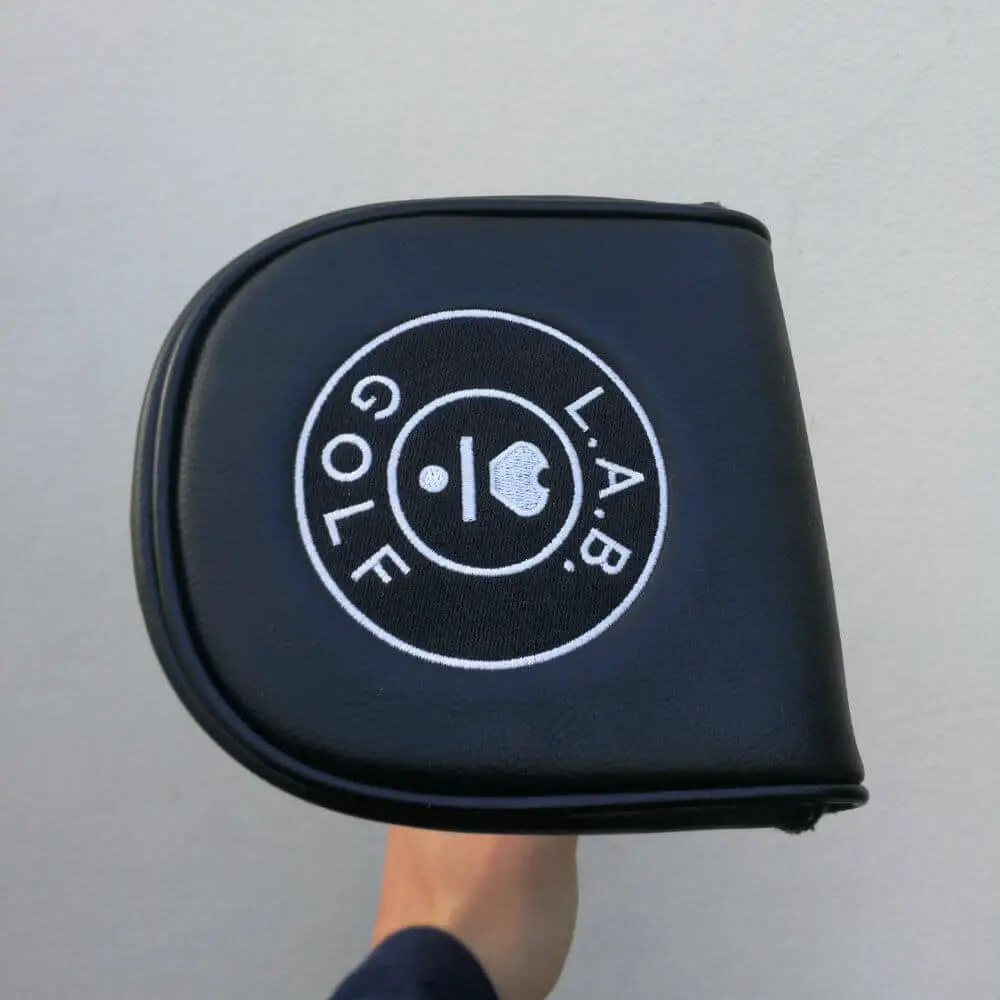
You could almost call it monsterously big. It’s by far the biggest putter I have ever used, and I would definintely prefer it if the head was a bit smaller. This would make it easier to slot into my golf bag and make it a bit less conscpicous on the greens.
2. It's Not Very Attractive
Some putters are literally beautiful to look at, with Scotty Cameron representing the pinnacle of putter design in my mind. The Directed Force 2.1 is at the opposite end of the looks spectrum. You could call it ugly, maybe even hideous. It would be a bit mean, but sometimes the truth hurts.
3 Lab Golf Have Just Released A Better Looking Alternative
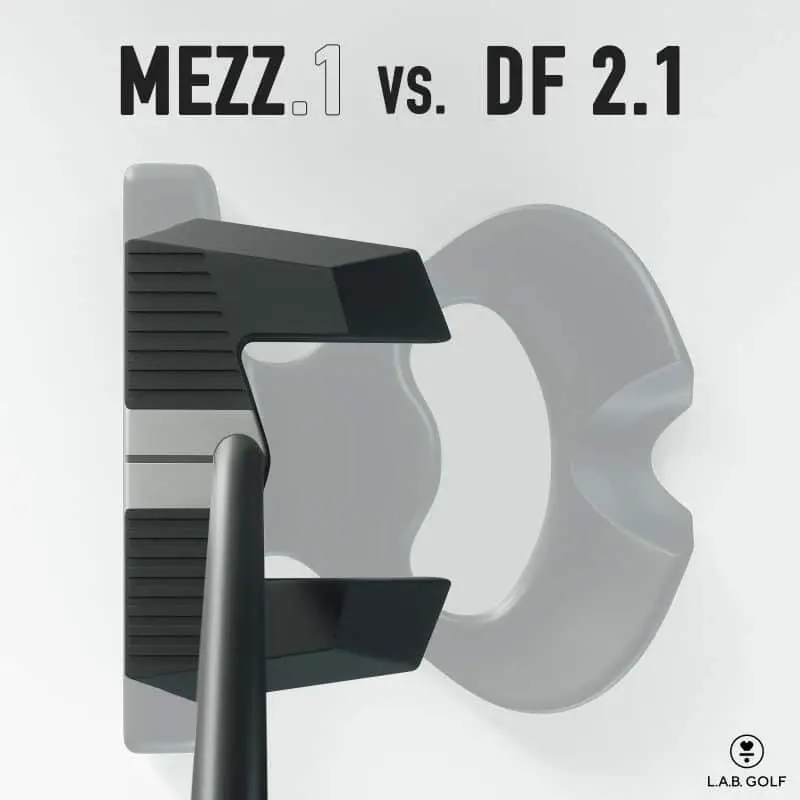
You may or may not be aware of the LAB Golf Mezz 1. The Mezz 1 is the newest putter in LAB Golf’s line-up, and it quite literally solves my two biggest gripes with the DF 2.1.
Unlike the DF 2.1, the Mezz 1.0 has a significantly more compact head, and the fang styling is much more attractive. It basically has all of the strengths of the DF 2.1 without any of the weaknesses. It does cost $200 more, however (ie $600 in total) so these extra benefits come at a price.
Nevertheless, if the DF 2.1 continues to perform well for me, I will consider investing the Mezz 1.0 a bit later down the line.
Should you upgrade the shaft?
In my case, it was a clear and emphatic NO. Given that I am not a professional golfer, I simply don’t see the point in adding $200+ dollars to an already expensive price tag. In my mind, the primary benefits of the DF 2.1 are the torque free design and built-in forward press. These benefits are present in the stock standard models, with the standard shaft.
To me, the benefits of a stability shaft in a putter simply aren’t worth paying for at this point in my economic journey. If I were swimming in cash, then I would consider the stability shaft.


